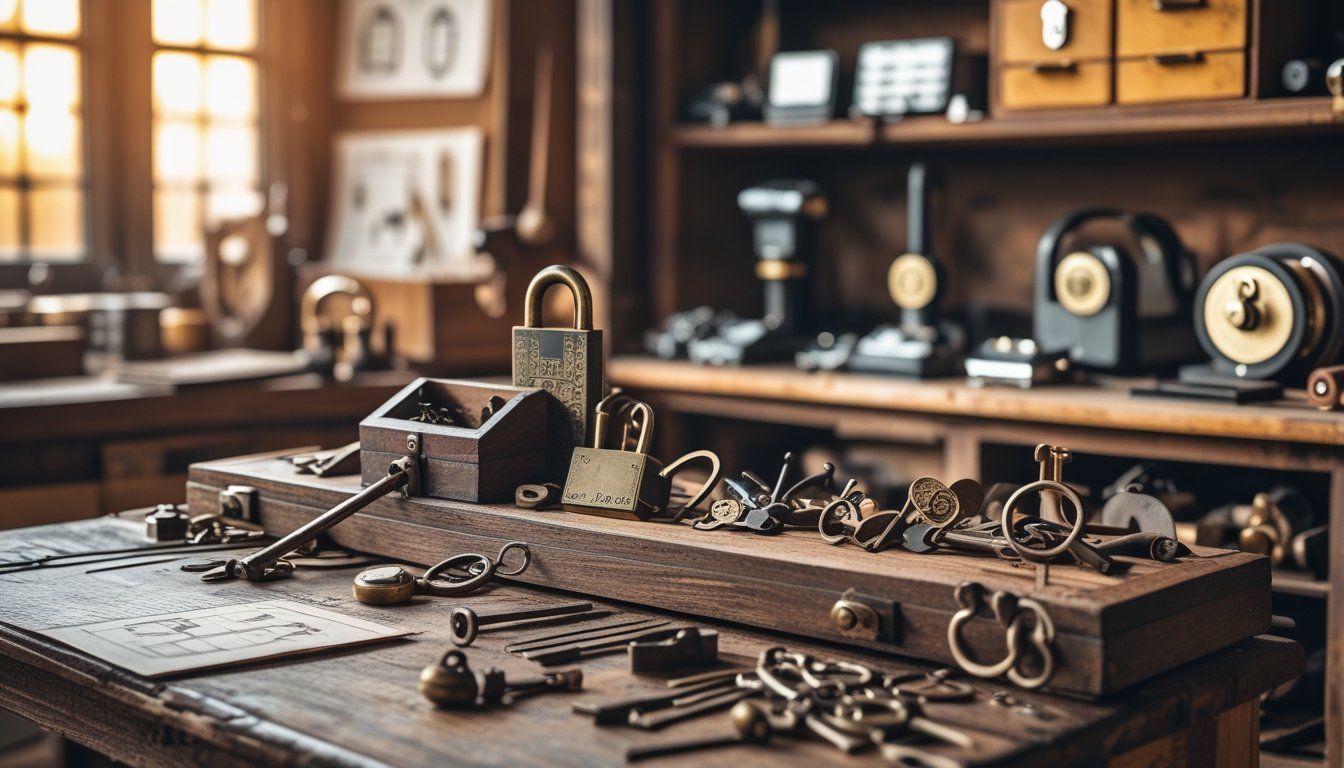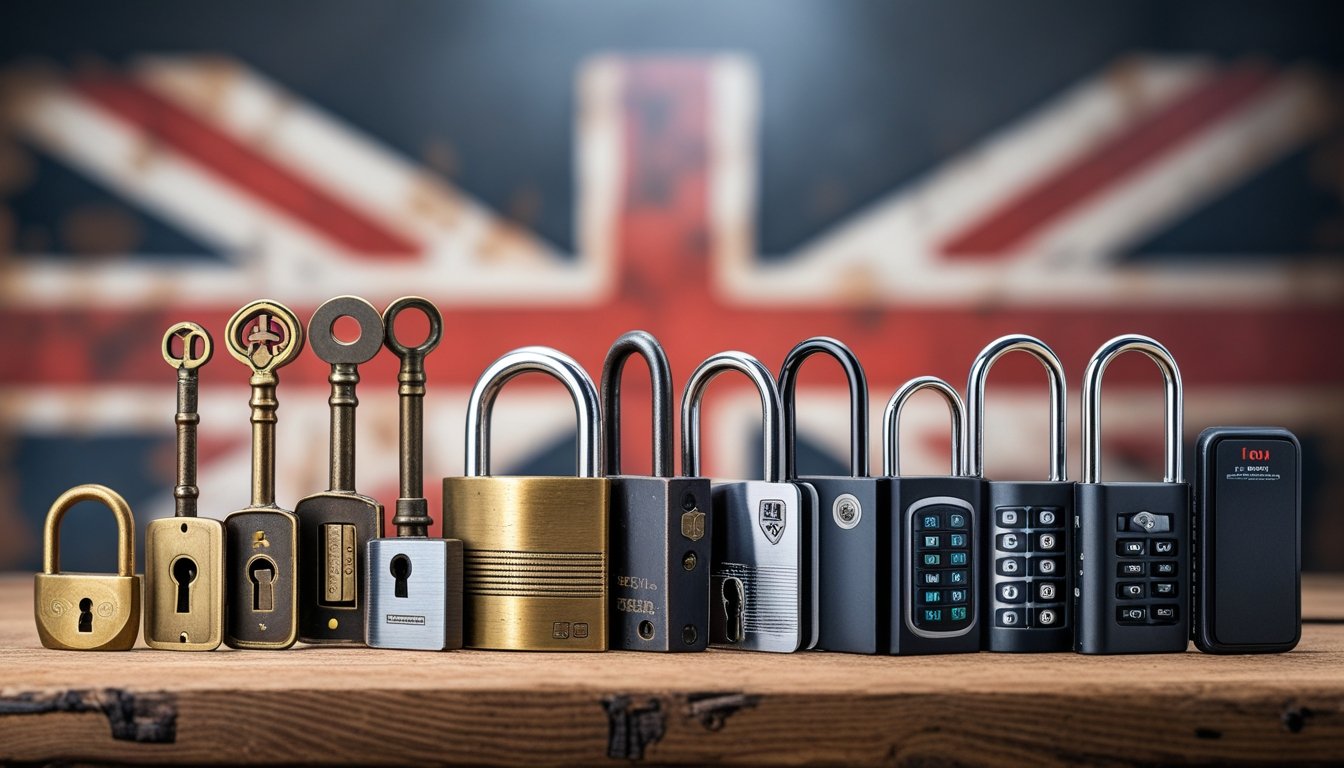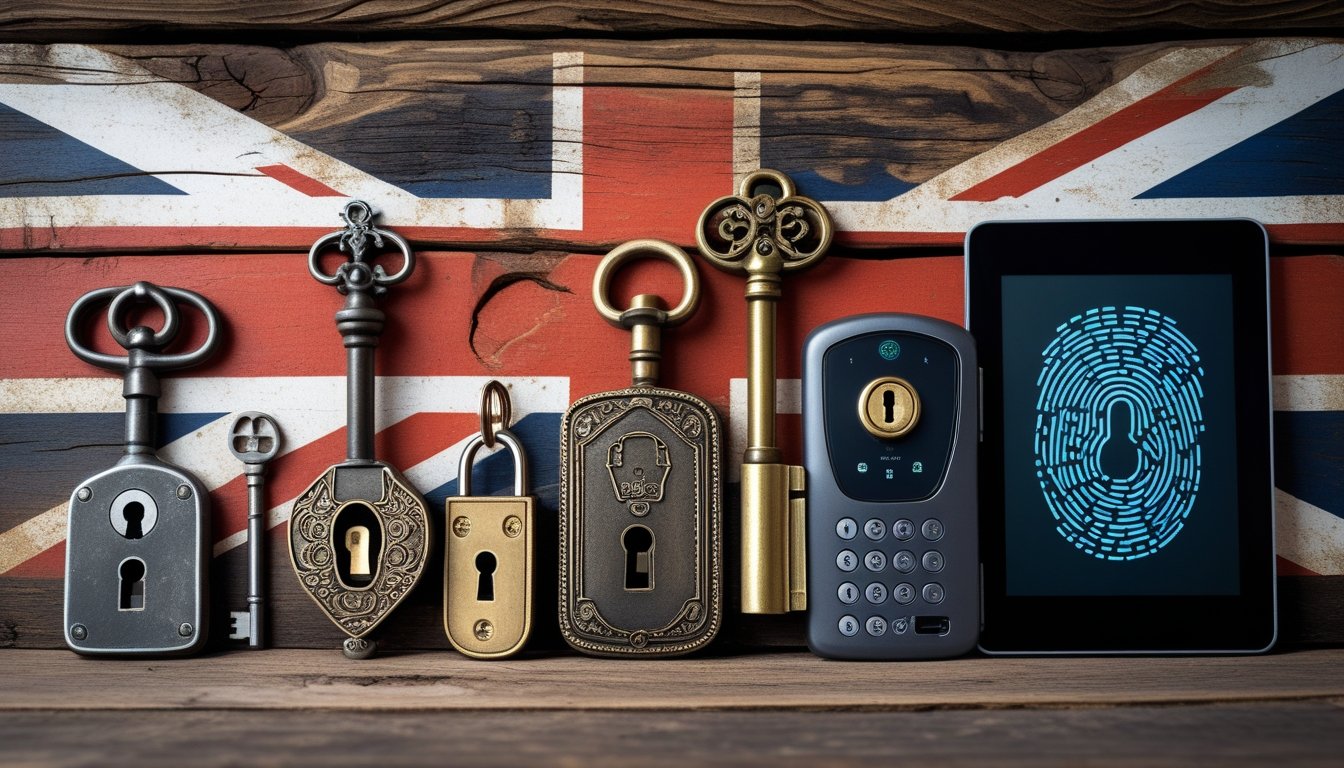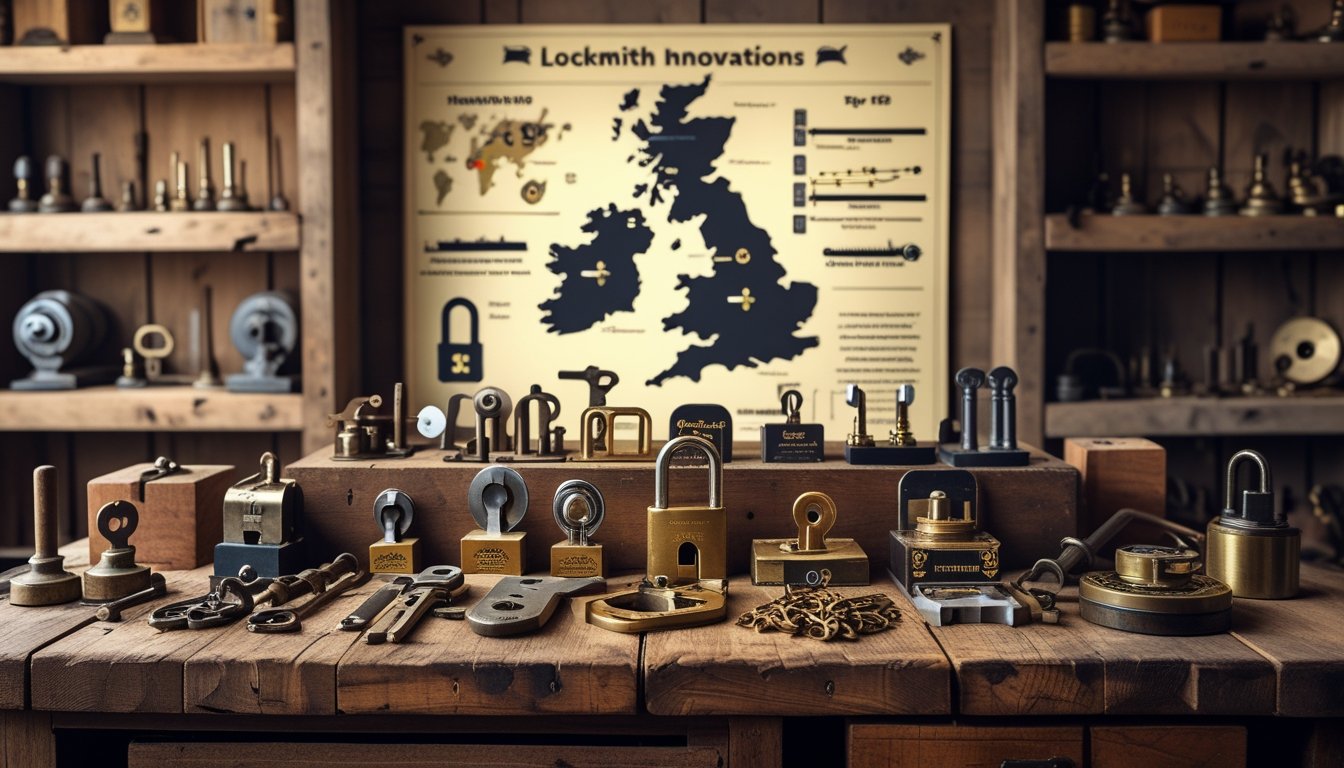Late updated: 22 May 2025 10:05
Written by: Elena Prescott
Historical Overview Of Locksmith Innovations In The UK: Key Developments and Milestones
Locksmithing in the UK has a rich history marked by significant innovations and technological advancements. From the early rudimentary locks influenced by the Romans to the sophisticated designs that emerged during the Industrial Revolution, the locksmithing trade has continuously evolved. The introduction of the Chubb lock in 1818 was a pivotal moment, setting new standards in security and design. This innovation demonstrated the power of combining creativity with engineering to meet the growing demands for safety and reliability.

Throughout centuries, locksmiths in the UK have transformed a basic necessity into an intricate art form, embracing developments in material science and engineering to create more secure locking mechanisms. These changes not only catered to the personal needs of individuals but also shaped national security strategies. By exploring the milestones in this fascinating journey, we can appreciate how historical innovations laid the groundwork for modern security solutions.
This exploration into the history of locksmithing is not merely about understanding the past inventions but recognising their influence on today's security technologies. As we delve deeper, we'll discover how historical trends and breakthroughs in this craft remain relevant, guiding today's locksmiths in their mission to protect our homes and businesses.
Key Takeaways
- The Chubb lock in 1818 was a major UK locksmith innovation.
- UK locksmithing transformed through historical advancements.
- Historic trends influence today's security solutions.
Milestones in the Evolution of UK Locksmith Innovations

Throughout history, UK locksmiths have played a pivotal role in advancing lock technology. From the early craftsmanship of locks to innovative designs such as the Yale lock, these milestones highlight key developments in security solutions.
Early Locking Mechanisms and Craftsmanship
In the early days, UK locksmiths took inspiration from Roman designs, crafting wooden locks with simple mechanisms. Metalworking techniques gradually improved, enhancing both the toughness and intricacy of the locks.
By the Renaissance, locksmiths were adept at combining art with engineering, creating ornate devices that not only secured but also symbolised status. These early designs laid the groundwork for innovations in the centuries that followed, underscoring the ingenuity and craftsmanship of these early artisans.
Emergence of Padlocks and Combination Locks
The industrial revolution marked a significant chapter in lock development, heralding the arrival of padlocks and combination locks. The UK saw the proliferation of these devices, which were more portable and versatile than earlier mechanisms.
Padlocks offered easily transportable security, while the introduction of combination locks provided an alternative to key-based systems. These innovations expanded security options for both personal and commercial use and demonstrated the evolving needs and inventive spirit of the era’s locksmiths.
Yale Lock and Deadlock Advances
The Yale lock, introduced in the 19th century, revolutionised locking mechanisms with its pin-tumbler design, offering enhanced security and ease of use. This design became a foundational element in modern lock manufacturing, widely adopted across the UK.
Deadlocks also gained popularity, offering additional security by requiring a key to engage and disengage the bolt. These advances signified a shift towards more secure residential and commercial locking solutions, reflecting the ongoing commitment of UK locksmiths to enhance security through innovation.
Modern Technologies and Security Solutions

As we explore contemporary security solutions, we notice remarkable advancements in both lock systems and technology-driven features. The integration of CCTV systems and innovations by firms like ASSA ABLOY UK highlight the modern landscape of security measures.
Contemporary Lock Systems and Door Opening Solutions
The evolution of modern lock systems showcases various technological innovations. Smart locks have become prominent, offering keyless entry through Bluetooth, Wi-Fi, or biometric authentication. These systems provide enhanced security, with features like remote access and integration with other smart home devices.
Digital door locks, which allow for programmable access codes, ensure convenience and flexibility. Anti-pick, drill-resistant locks are now standard, providing robust defence against traditional lockpicking methods.
Role of CCTV Systems and Home Security
CCTV systems are pivotal in modern security, offering real-time surveillance and recording. These systems serve as effective deterrents against trespassing and other illegal activities. Advancements in video analytics allow for motion detection, facial recognition, and automated alerts.
Home security systems have grown more sophisticated, incorporating sensors, alarms, and remote monitoring services. This interconnected ecosystem ensures a comprehensive approach, enhancing our ability to secure personal spaces effectively.
ASSA ABLOY and ASSA ABLOY UK’s Impact
ASSA ABLOY is a frontrunner when it comes to innovation in security. Their commitment to developing cutting-edge solutions like electromechanical lock systems has set industry standards. In the UK, they have pushed forward with tailored solutions for various sectors, including healthcare and education.
Their development of mobile access technologies is transforming key management, offering secure and flexible access through smartphones. These innovations demonstrate a forward-thinking approach, ensuring that security is both effective and adaptable to evolving needs.
Frequently Asked Questions

Locksmithing in the UK has a rich history tied to technological advancements and industrial changes. We've seen transformations from traditional craftsmanship to modern digital security systems. Here, we address common inquiries related to these developments.
What are the origins of locksmithing in the United Kingdom?
Locksmithing in the UK dates back to ancient times, with early examples of lock mechanisms discovered in Roman Britain. These early locks were often made of wood and iron and required considerable skill to create. As cities grew, the demand for security solutions increased, prompting further innovations.
How did the Industrial Revolution impact the development of locking mechanisms?
The Industrial Revolution brought about mass production and standardisation in lock-making. With new manufacturing techniques, locks became more accessible and reliable. It marked the transition from individually handcrafted locks to more intricate and secure models produced in factories.
What significant advancements in lock security were made during the Victorian era?
Victorian times witnessed advancements in lock designs, including the development of the famous Chubb and Bramah locks. These locks introduced increased complexity and security, with unique mechanisms that were nearly impossible to pick, greatly enhancing the protection of homes and businesses.
Can you outline the progression of electronic and digital locks in the UK?
The introduction of electronic and digital locks began in the late 20th century. Initially used in hotel and business settings, these locks offered keyless entry and enhanced security. Today, smart locks connected to home networks reflect the latest in digital security technology, bringing convenience and innovation to households across the UK.
What are some notable British contributions to the field of locksmithing throughout history?
Britain has produced several prominent figures and innovations in locksmithing, including Joseph Bramah and Jeremiah Chubb. Their designs laid the groundwork for modern lock security. Additionally, British inventors have been at the forefront of creating secure locking systems that integrate contemporary technology.
How has the profession of locksmithing evolved in the UK over the last century?
The last hundred years have seen locksmiths transition from traditional craftsmanship to specialists in electronic and digital security systems. Training and certification have become more structured, ensuring that locksmiths today possess a comprehensive understanding of both mechanical and digital locks. The profession continues to evolve with technological advancements, requiring ongoing education and adaptation.
